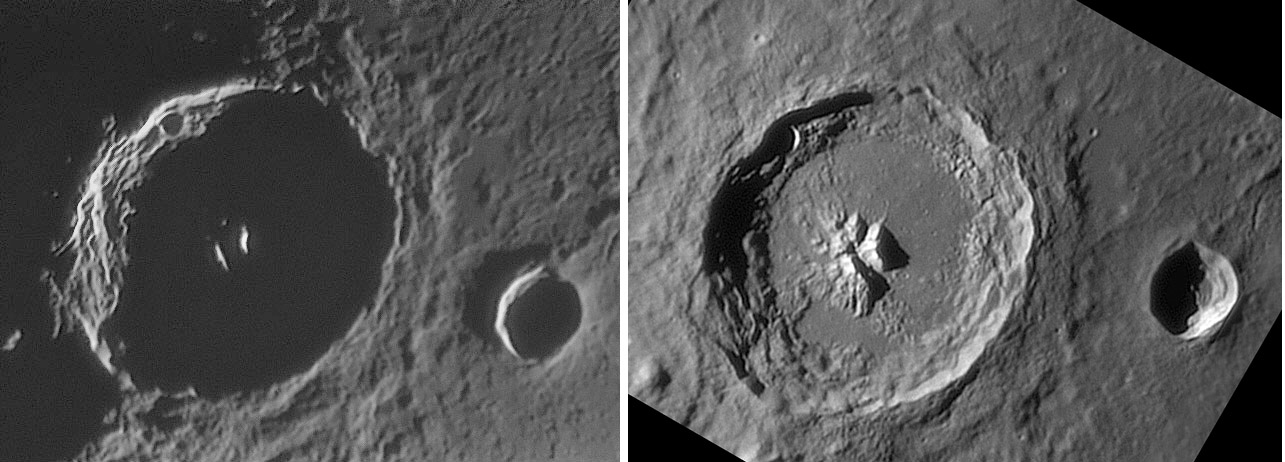
left image by Pete Lawrence, Selsey, England, and right image by Jim Fisher, Austin, Texas
As the Sun rises over a lunar formation the solar rays are nearly tangent to the surface and then climb higher. In Pete’s Sunrise image, Theophilus and its miniature look alike Madler are largely cloaked in shadows. The two tallest central peaks of Theophilus (and a piece of a lower one) rise out of the cold night into the early morning light. According to Lunar Map 78 (made from Apollo stereo images), Theophilus is 100 km in diameter and it’s tallest central peak is about 3 km high and the second tallest is 1.9 km, estimated by comparison of its shadow length with that of the tallest peak. The LM shows the crater’s eastern rim rises about 4.4 km above the crater floor. Madler is 28 km wide and 2.7 km deep, and back in the early 1970s I measured its central peak as being 0.6 km high or slightly taller (its shadow didn’t reach the level part of its floor). Madler’s small peak is not visible in Pete’s image. The low Sun view graphically demonstrates that central peaks get progressively taller with increasing crater diameter. Madler’s peak height is only 22% of the crater’s depth, whereas the ratio for Theophilus is 68%. The equations that relate central peak heights to crater diameters suggest that peaks should be taller than craters are deep for craters with diameters larger than about 200-250 km. At crater diameters around 150-200 km the floors of a few craters have peak rings as well as central peaks. At about the crater size where peaks would be higher than their rim, energy is apparently diverted away from the peak to uplift a larger circular area on crater floors. More tomorrow!
Note: there is great uncertainty in the height of the central peak of Theophilus - the LM suggests 3 km, but Rükl gives 1.4 km; someone will undoubtedly measure the height from Jim’s image.
Technical Details:
Left: Feb 22, 2007. C-14 (14″ SCT), Lumenera SKYnyx 2-0M camera with a red filter attached. 2.5x Powermate optical amplifier used to increase the effective focal length of the system to f/27.5.
Right: 10-11-06, 02:46 UT. 250mm, f/6 newtonian with 3X barlow; Royce primary mirror; Protostar secondary + DMK 21A F04 camera; processed in Registax V4, AstraImage & PixInsight.
Related links:
Pete’s spectacular web site
Yesterday's LPOD: Flat Black Crisium
Tomorrow's LPOD: Peak Rings
COMMENTS?
Register, Log in, and join in the comments.



